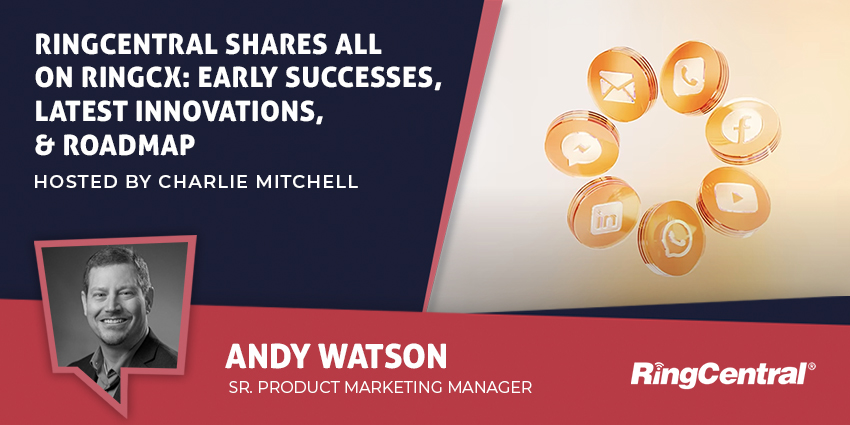The journey to the cloud is a vitally important one, with more and more momentum behind it. Over the last few years, countless organizations have begun shifting processes, workflows, and systems into this flexible, online environment. The cloud landscape promises business leaders a level of agility they now need to ensure ongoing business continuity, and stability. For contact center leaders, CCaaS (Contact Center as a Service) solutions, offer an opportunity to leave the challenges of on-premises tech behind.
CCaaS platforms ensure companies can continue to deliver consistently excellent service to their clients and customers, even when numerous agents are working remotely or in a hybrid environment. What’s more, CCaaS solutions can also help businesses stay ahead of the competition, giving them the freedom to quickly implement new solutions like conversational bots, artificial intelligence, and new omnichannel communication options.
However, even with all the benefits cloud-based contact center operation offers, the transition to CCaaS isn’t without its challenges. Any major migration into the cloud brings with it a number of potential pitfalls. Here are some of the common problems business leaders face during their journey, and what they can do about them.
1. Failing to Execute Proper Discovery and Documentation
A good migration strategy is crucial to ensuring any business can take full advantage of the benefits the cloud landscape has to offer. Planning correctly also ensures companies are less likely to make mistakes, which could lead to heftier costs and missed project deadlines.
According to one study by McKinsey, companies are expected to waste anywhere up to $100 billion on inefficient cloud migration projects by 2024. To begin any cloud migration, companies first need to invest in the right discovery and documentation practices so that they understand the scope of their migration project.
Unfortunately, the importance of good planning has been overlooked in the past, particularly by companies struggling to move rapidly into the cloud, desperate to adapt to changing workplace practices and economic challenges. Before starting any CCaaS migration, business leaders should take the time to examine and map the contact center experiences their company already offers and determine which customer journeys and channels need to be preserved, removed, or improved.
To build the right experience, developers and IT experts need accurate documentation of the existing CX landscape, how it should perform, and how they align and deliver on actual business goals. Only with accurate documentation of the current state can companies set goals and targets for their CCaaS strategy.
2. Overestimating the Scalability of the Platform
One of the main reasons many companies are beginning to transition their contact center into the cloud is the flexibility the environment offers. Cloud platforms – including all the technology needed to deliver a great CX (CCaaS, CRM, payments, etc.) — are often inherently more scalable and agile than their on-premises counterparts. However, the level of scalability and support a solution can offer will vary from one provider to another.
Companies that make the mistake of assuming their solution will be able to scale to suit their needs often encounter problems very quickly with bandwidth and performance issues. This is why it’s so important for any organization investing in a CCaaS migration to ensure they adequately test their ecosystem before they begin rolling out the new technology in full.
Organizations can work with their CCaaS implementation partner to conduct functional, regression and performance tests on the platform, and ensure it has the stability and reliability the company needs. Effective testing allows business leaders to pinpoint exactly how scalable their new ecosystem is, while reducing the risk of defects, errors, and downtime when the time comes to transition employees into a new system.
3. Failing to Consider New Points of Integration
CCaaS solutions in today’s digital landscape are often made up of a multitude of connected tools and systems. Companies need to integrate everything from PBX telephony solutions to IVR systems, CRM tools, and messaging apps or bots into the same unified environment. However, many organizations forget that each integration comes with new challenges to consider.
Ensuring connected databases and tools not only work efficiently together, but also preserve the security of data from one end of the customer journey to the other is crucial.
With this in mind, companies leveraging the benefits of a CCaaS platform need to ensure they have access to low-code and no-code platform tools, APIs, and SDKs, and also tools for consistent monitoring and security. Having a strategy in place for monitoring and tracking any issues will reduce the risk of downtime and help businesses to preserve their reputation.
Depending on the nature of the CCaaS solution, it may even be crucial to work alongside a service provider who can help to bridge the gaps between multiple solutions in a hybrid environment, with secure, streamlined connections.
4. Rushing Through Implementation without Visibility
Speed is often crucial in any contact center environment. The faster companies can implement new tools, test their systems’ performance, empower employees and deliver excellent customer experiences, the faster they’ll grow. However, rushing through complex processes, like the transition onto a CCaaS platform, can lead to more problems than benefits.
For most organizations, a phased approach to CCaaS migration will be the most effective solution. Although it can require a higher overhead, phasing the migration process helps to minimize risk. This strategy also ensures business leaders have time to think about training staff and providing educational resources to early users, so they can improve the chances of rapid adoption.
A phased migration strategy can also be an excellent way for companies to take a more agile approach to development, where they can learn from the feedback staff provide through each stage of the migration process and make relevant changes to the technology and ecosystem accordingly. The key to leveraging this strategy successfully is ensuring excellent visibility, with the right monitoring tools, analytics, and consistent insights to track technology performance.
Overcoming CCaaS Migration Challenges
Making the transition into a CCaaS landscape for the first time can seem complicated. While there are potential pitfalls to overcome, a strategic approach can help businesses to avoid unnecessary risks, inconsistencies, and errors.
Andriy Zakharchenko, Cyara’s Cloud Evangelist and subject matter expert offers up his advice as you approach these projects to facilitate success. “Planning is key. Taking the time to understand what you’re migrating, drafting a strategy for how you’re going to execute that migration, and finding key solution providers and partners both inside and outside your business who can help you on this path is ultimately lead to your most efficient and secure transition. With this detailed project plan, you can get started with confidence.”







